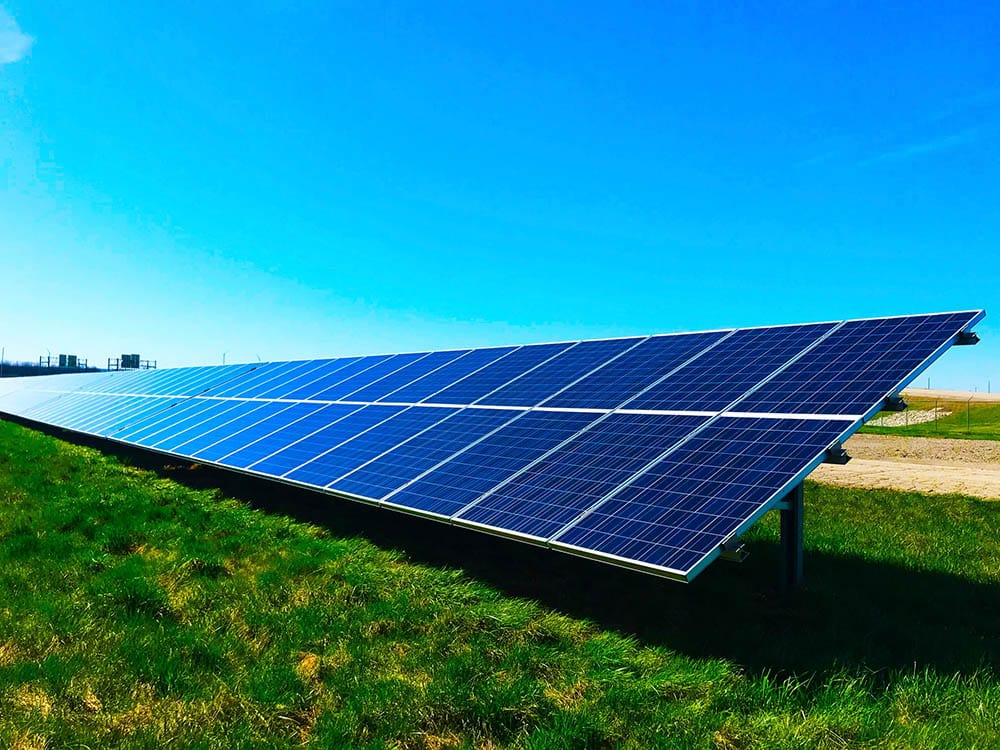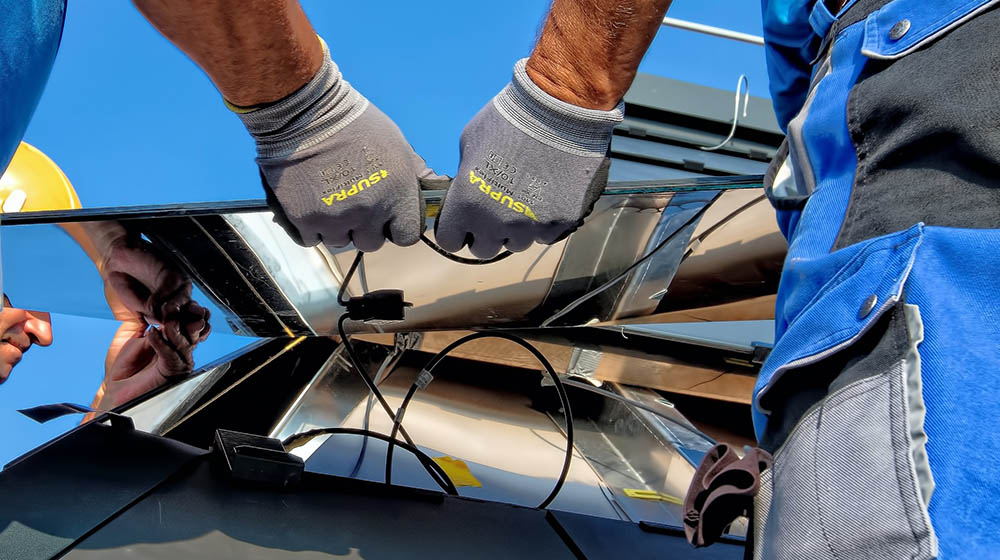What Are Solar Panels Made Of? What You need To Know!
-
Codee Chessher
- Last updated:

Solar panels can easily seem like black magic if you’re not well-versed in the science of how they work. How exactly solar panels can just sit in the sunlight and generate electricity used to power homes and businesses is a fascinating scientific process.
Each solar panel is comprised of many photovoltaic or PV cells, which are composed of crystalline silicon wafers. There are other chemicals involved too, like boron, gallium, and phosphorus, which help the cells convert solar radiation into usable electrical current.
Cells are arranged into a grid pattern depending on how big an individual panel is going to be. The panels are covered in non-reflective glass or plastic to ensure sunlight is absorbed by the cells instead of being reflected.
Solar cells produce electricity via the photovoltaic effect, which is where photons supplied by the sun bounce around within the carefully crafted cells, where the energy converts into an electrical current. The electricity is directed to an inverter, where it’s converted from DC current into a more useful AC current.
There are some special or experimental types of solar panels utilizing organic materials, but these are pretty rare and difficult to find.

Why Do Solar Panels Use Silicon?
You may wonder why exactly solar panels use silicon instead of another type of material. Well, there are actually several very good reasons for that.
Silicon is used for the following reasons:
- Extremely cheap and plentiful
- Energy-efficient
- Corrosion-resistant
- Very photoconductive
- Long-lasting
- Lightweight
- Disperses heat easily
- Non-toxic
Simply put, silicone is the cheapest material that ticks all the boxes an ideal solar cell needs, just like it became the material of choice for computer chips. There’s little point in developing alternatives because silicon is virtually ideal. Organic solar cells are one exception, though.

How Are Solar Panels Made?
Raw silicon has little electrical potential, but when mixed with other chemicals it becomes extremely useful for solar panels as well as other electrical applications.
Silicon is usually melted down and combined with gallium, boron, and phosphorus in big sheets. These sheets are cut into thin wafers and sandwiched together within metal, plastic, and non-reflective glass casings to produce solar cells. Wiring is then added to connect the cells to power inverters.
Where Are Solar Panels Made?
There are solar panel manufacturers in North America and Europe, but the majority of solar panels are manufactured in Asian countries because companies can produce more panels while taking advantage of low labor costs. The resulting solar panels are cheap and plentiful. The tradeoff is that there’s little quality control and standardization to ensure the panels are of high quality.
Solar panel manufacturers within the U.S have begun ramping up production in recent years in an effort to compete with Asian manufacturers, adhering to strict quality control procedures that guarantee their solar panels are of high quality.

Does Solar Panel Manufacturing Produce Pollution?
It’s a reasonable question considering that the main point of solar energy is to cut down on pollution. Unfortunately, the manufacturing process of solar panels does produce airborne pollution that contributes to worsening manmade climate change.
The good news is that manufacturers are ultra-conscious about finding methods to make the process more environmentally friendly. Since the 1970s, improvements in supply chain logistics, technology, and more prevalent recycling have made solar panels more and more green to produce.
It helps a lot that solar panels have a very long lifespan. Most panels will last 20 years or more of regular use if regularly cleaned. This helps to cut the ratio of the pollution from the panel’s production versus clean energy generated by the panel.
Featured Image Credit: 🇻🇪 Jose G. Ortega Castro 🇲🇽, Unsplash
Contents
